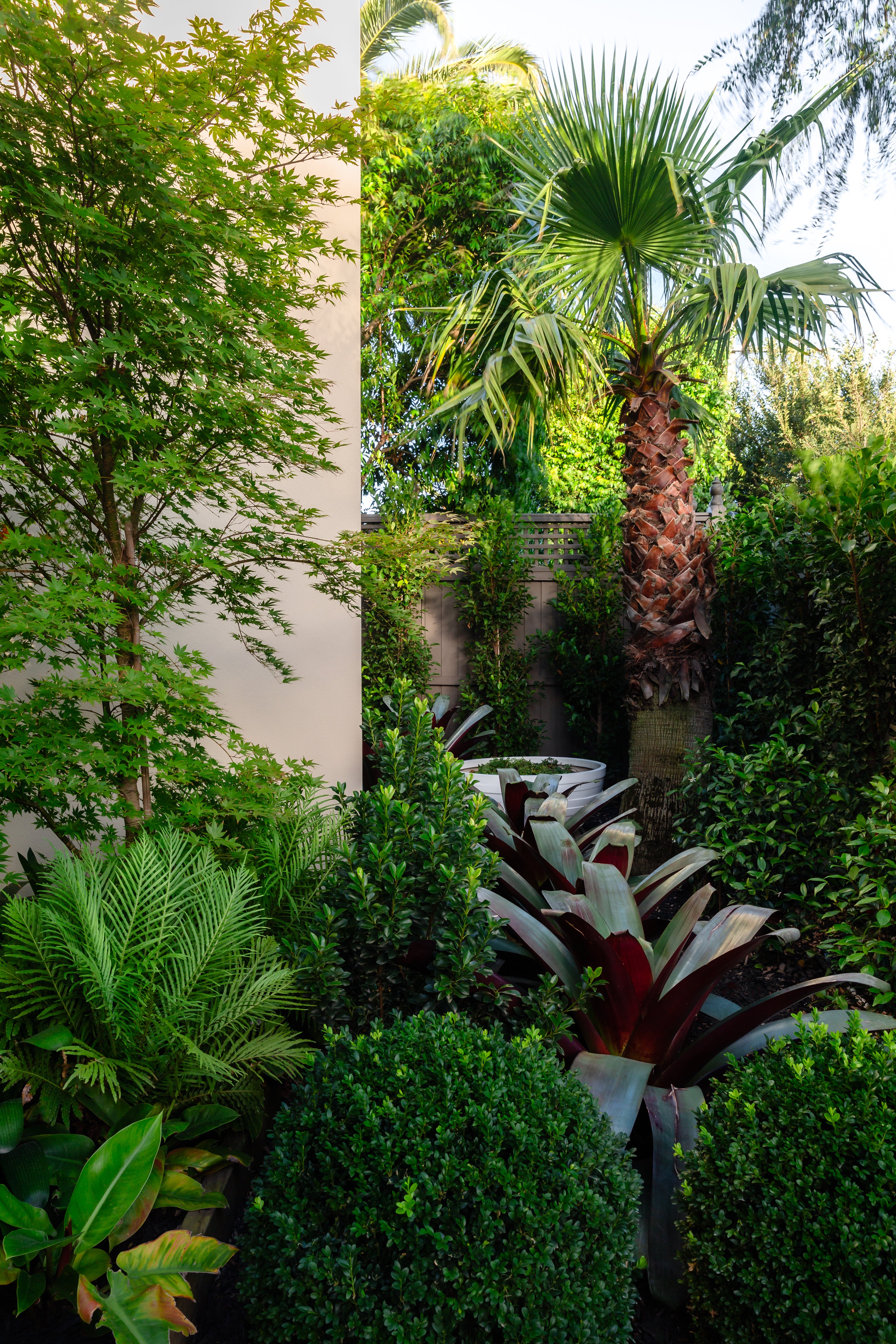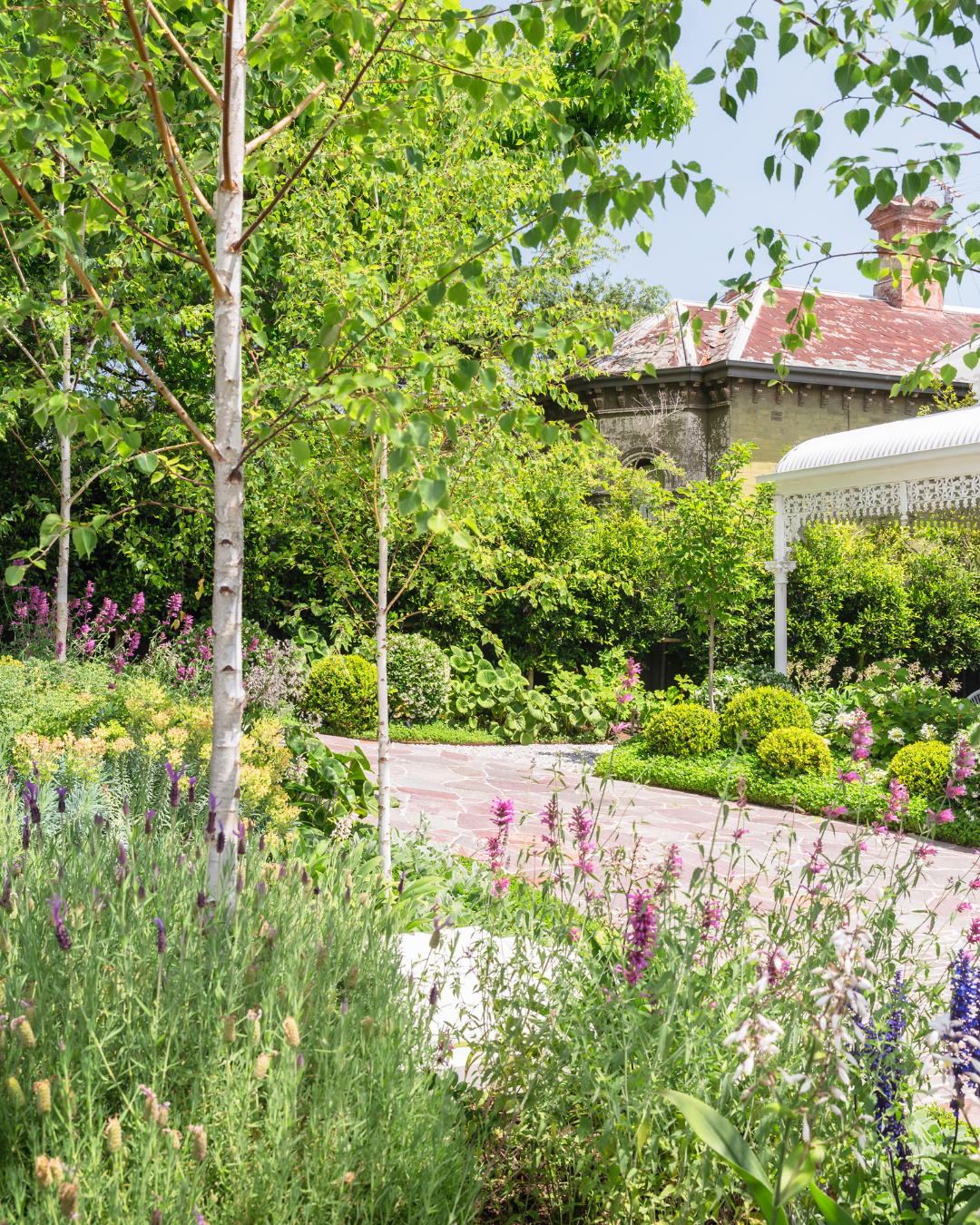Designing a low-maintenance garden is about reducing work and making smart choices that suit your lifestyle and environment. Selecting drought-tolerant trees is a savvy move for affluent homeowners who appreciate subtle luxury and efficiency. These trees provide year-round beauty with minimal care, making them ideal for high-end gardens where aesthetics and convenience are paramount. This guide introduces five exceptional drought-resistant trees that thrive in various conditions, bringing understated elegance and resilience to your garden.
Olea europaea (Olive Tree)
Olea europaea, commonly known as the Olive Tree, symbolizes tranquility and endurance. This evergreen tree is renowned for its silvery-green foliage, which adds a unique texture to any garden. It thrives in full sun and requires minimal water once established, making it a perfect addition for those seeking a low-maintenance yet luxurious garden experience.
Key Facts
- Mature Height: 4 to 10 meters
- Mature Width: 4 to 6 meters
- Best Uses: Feature tree, container plant, formal or informal hedges, Ornamental tree, topiary,
- Leaf Appearance: Silvery-green, narrow, and elongated
- Rate of Growth: Slow to moderate
- Tolerates: Drought, poor soil, coastal conditions, heat, humidity, mild frost, snow
Why It's Perfect to Add to Your Garden
The Olive Tree brings a touch of Mediterranean charm and sophistication. Its resilience to drought and low water needs makes it ideal for busy homeowners who want a beautiful landscape without constant upkeep. Whether planted as a standalone feature or in rows to create a stately hedge, the Olea europaea effortlessly enhances the elegance of any outdoor space.
Acacia cognata 'Waterfall'
Acacia cognata Standard, commonly known as the 'Waterfall' Standard Wattle, is a captivating and graceful small tree or standard form of the Acacia cognata species. This Australian native plant is highly regarded for its weeping, drooping branches and delicate, fern-like foliage. It belongs to the Fabaceae family and is prized for its ornamental appeal and suitability for various landscaping applications.
Key Facts
- Common Name: 'Waterfall' Standard Wattle
- Mature Height (meters): Typically reaches a height of 2-3 meters
- Mature Width (meters): Spreads to approximately 1-2 meters
- Uses: Ideal as a feature tree in gardens, courtyards, and containers. Its unique form and foliage make it a standout specimen plant in residential and public landscapes.
- Sun: Prefers full sun to partial shade.
- Maintenance: Low maintenance; minimal pruning is needed to maintain its weeping shape and remove dead or wayward branches.
- Water Requirement: Moderate; regular watering is recommended, especially during dry periods and in the tree's early years.
- Rate of Growth: Fast
Why It's Perfect to Add to Your Garden
Acacia cognata 'Waterfall' is an excellent choice for those looking to add texture and movement to their front garden. Its cascading foliage creates a soft, flowing appearance that adds depth and dimension to any landscape. This tree is particularly well-suited for mixed borders or as a feature plant in modern gardens. Its fast growth rate and low water needs make it an efficient and stylish choice for high-end gardens.
Melaleuca quinquenervia (Broad-leaved Paperbark)
The Melaleuca quinquenervia, or Broad-leaved Paperbark, is a hardy and adaptable tree known for its distinctive bark and lush green leaves. It is incredibly resilient, making it suitable for various garden settings, particularly dry or poor soil. Its adaptability and robustness make it a top choice for gardens aiming for longevity and minimal care.
Key Facts
- Mature Height: 6 to 10 meters
- Mature Width: 4 to 6 meters
- Best Uses: Feature tree, shade tree, windbreak
- Leaf Appearance: Broad, bright green leaves with a leathery texture
- Rate of Growth: Moderate
- Tolerates: Drought, waterlogging, coastal exposure
Why It's Perfect to Add to Your Garden
The Broad-leaved Paperbark combines toughness with beauty, offering a unique blend of vibrant foliage and textured bark that can be a visual focal point in any garden. Its ability to withstand drought and occasional waterlogging makes it incredibly versatile, perfect for homeowners who desire a resilient garden that can adapt to varying conditions. This tree’s low maintenance and high adaptability are ideal for investing in a garden that grows effortlessly with minimal input.
Eucalyptus sideroxylon (Red Ironbark)
The Eucalyptus sideroxylon, or Pink Ironbark, is notable for its striking dark bark and stunning flowers that range from white to pink to red. It is highly valued for its ability to tolerate dry conditions and poor soils, making it an excellent choice for gardeners looking to add beauty and resilience to their outdoor spaces.
Key Facts
- Mature Height: 10 to 20 meters
- Mature Width: 6 to 12 meters
- Best Uses: Feature tree, shade tree, screening tree
- Leaf Appearance: Narrow, blue-green leaves
- Rate of Growth: Moderate
- Tolerates: Drought, poor soil, light frost
Why It's Perfect to Add to Your Garden
The Pink Ironbark offers a combination of striking visual appeal and resilience, making it a standout choice for sophisticated gardens. Its flowers attract birds and insects, adding life and movement to the garden while requiring little to no maintenance once established. The unique bark and vibrant blooms ensure this tree remains a focal point year-round, ideal for those who value style and practicality.
Callistemon viminalis (Weeping Bottlebrush)
Callistemon viminalis, or Weeping Bottlebrush, is popular for its cascading branches and profusely blooming vibrant red flowers. This highly drought-tolerant tree thrives in full sun, making it perfect for gardens that need a splash of color without high water demands.
Key Facts
- Mature Height: 5 to 8 meters
- Mature Width: 4 to 6 meters
- Best Uses: Feature tree, screen, container plant
- Leaf Appearance: Narrow, lance-shaped leaves
- Rate of Growth: Fast
- Tolerates: Drought, coastal exposure, poor soil
Why It's Perfect to Add to Your Garden
The Weeping Bottlebrush is ideal for those seeking a tree that offers visual appeal and minimal maintenance. Its vibrant flowers contrast sharply against dark green foliage, adding a dynamic element to any garden. With its tolerance for drought and ability to thrive in various conditions, this tree is perfect for homeowners who want to enjoy a vibrant landscape without the hassle of frequent watering or care.
Conclusion
Selecting drought-tolerant trees for your garden is a practical yet elegant choice for those who value style and convenience. Trees like the Olea europaea, Acacia cognata, Melaleuca quinquenervia, Eucalyptus sideroxylon, and Callistemon viminalis provide a blend of beauty, resilience, and low maintenance, making them ideal for high-end gardens. By choosing these trees, you enhance the visual appeal of your outdoor space and ensure that your garden remains a serene and inviting retreat with minimal effort.
FAQs
Q1: Are drought-tolerant trees suitable for all soil types?
A1: Many drought-tolerant trees like Acacia cognata and Melaleuca quinquenervia are adaptable to various soil types, including poor soils. However, it's essential to check each tree's specific soil preferences.
Q2: How often should I water my drought-tolerant trees?
A2: Once established, drought-tolerant trees require minimal watering. Typically, watering deeply once every two to three weeks is sufficient, depending on the climate and soil conditions.
Q3: Can these trees be grown in containers?
A3: Trees like the Olea europaea and Callistemon viminalis can thrive in containers, provided they have adequate drainage and are watered appropriately.
By carefully selecting the right trees, you can create a stunning, low-maintenance garden that aligns with your lifestyle and aesthetic preferences.















